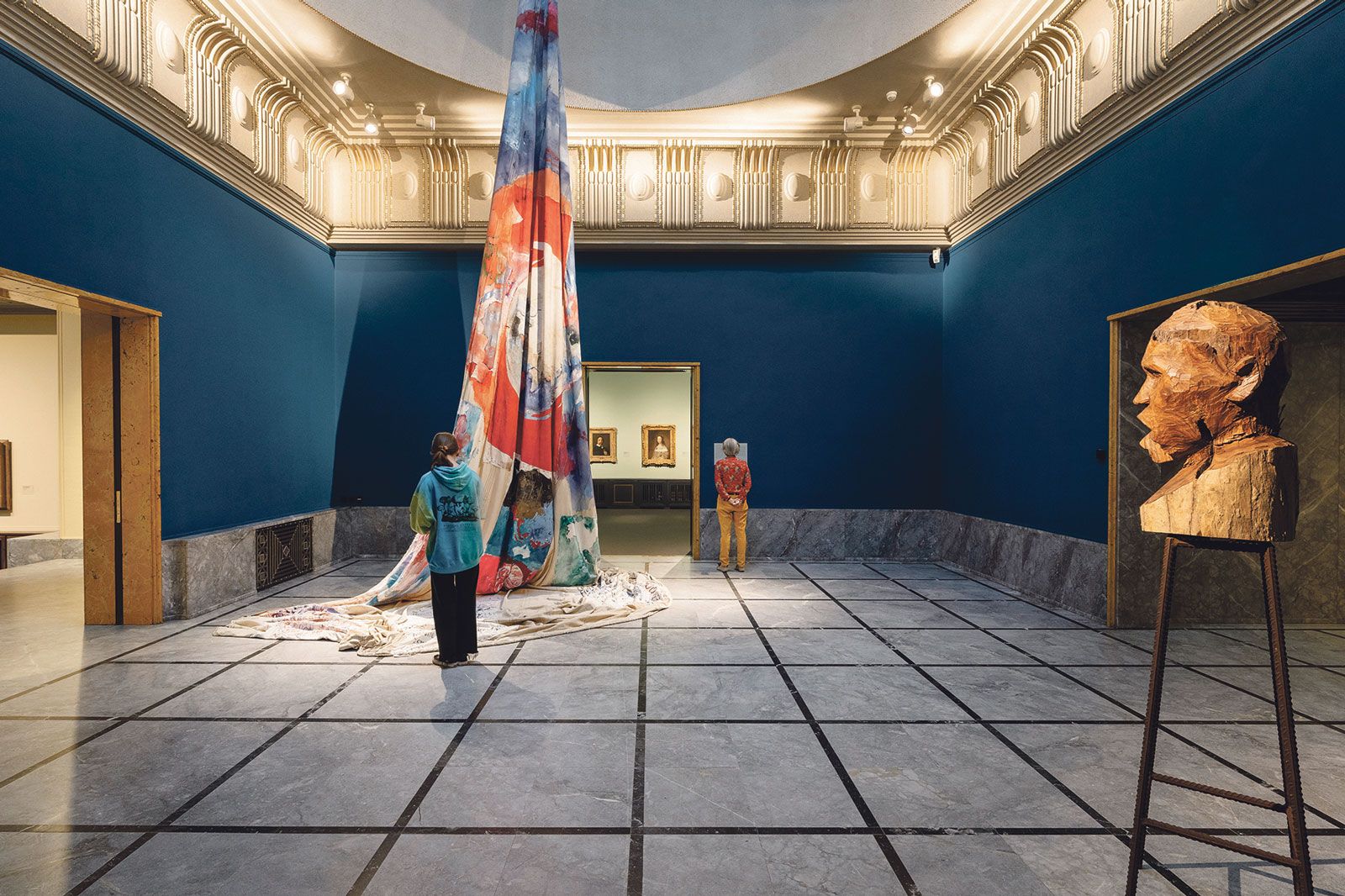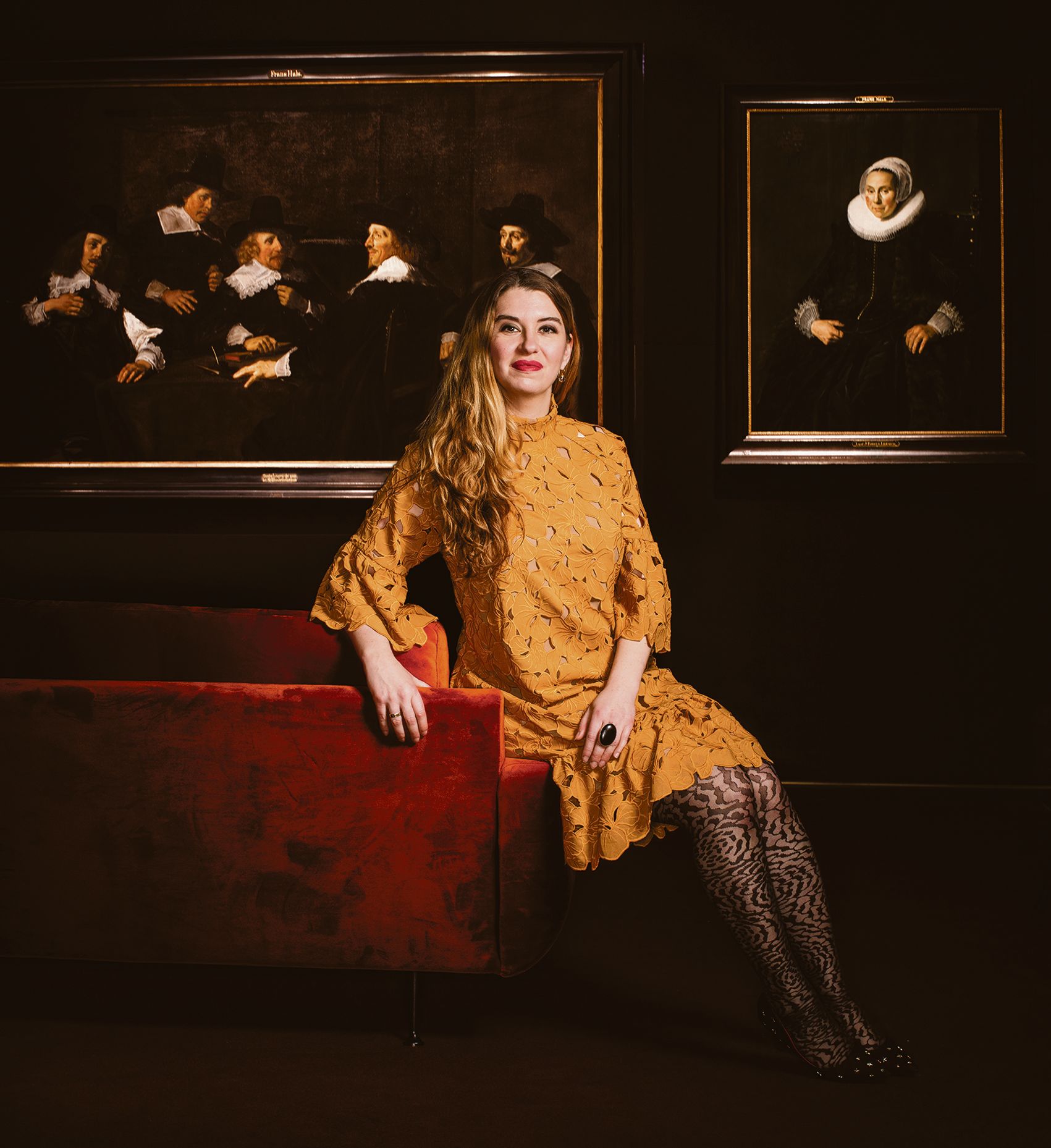Competition between Zurich, one of Europe’s most important banking hubs, and Basel, the home of pharmaceutical giants, has traditionally been fierce. Passions run high when their two football teams, FC Zurich and FC Basel, meet on the pitch.
Until now, Basel has had the edge as a destination for art lovers. But Zurich is playing catch up—and will soon be home to the biggest art museum in Switzerland. On 9 October, a major new extension to the Kunsthaus Zurich, built by the British architect David Chipperfield at a cost of SFr206m ($223m), will open to the public.
It is a step that city authorities hope will put the city on an equal footing with Basel as an arts centre and one the Kunsthaus describes as a “quantum leap”.
While Zurich has long boasted more commercial art galleries, Basel is home to the world’s best-known art fair, Art Basel, and top-drawer museums. Exhibitions at the Kunsthaus in recent years have not generally attracted as much attention as those at the two main Basel art museums, the Kunstmuseum and the Fondation Beyeler.

The extension to the Kunsthaus on Zurich’s Heimplatz, across the square from the original 1910 building, doubles the amount of available space. The two are linked by an underground passage designed by Chipperfield and containing works by Olafur Eliasson. Before the pandemic, the Kunsthaus welcomed around 300,000 visitors a year: with the extension, it expects as many as 400,000.
“We can offer more in terms of presenting art, and we have extensive, very high-quality space for events,” says Christoph Becker, the museum’s director. “The Kunsthaus can offer temporary exhibitions across the board, from blockbusters to niche subjects.”
The first exhibition in the new extension, called Earth Beats, links art across several centuries with topical questions about climate protection. In the months ahead, the Kunsthaus plans shows devoted to Yoko Ono, Federico Fellini and Aristide Maillol.
The goal of the architecture was to turn the square—which is one of Zurich’s busiest traffic hubs as an intersection of three major roads—into a new urban centre for the arts and education.
The value of the collection in the Kunsthaus has increased dramatically
To achieve that, Chipperfield designed a central entrance hall, inspired by Tate Modern’s Turbine Hall, that is admission-free and connects the square with a sculpture garden featuring works by Dan Graham, Pipilotti Rist and Auguste Rodin.
As well as temporary exhibitions, the extension will house art since the 1960s and the Bührle collection, a permanent loan of 200 works, including paintings by Monet, Cézanne, Degas, Gauguin and Van Gogh. Becker points out that it is not just the Kunsthaus’s footprint that has grown—the collection has too. In addition to the Bührle collection, the museum has incorporated three more valuable private collections in recent years. Werner Merzbacher’s collection includes paintings by Monet, Cézanne, Renoir and the Brücke artists. Hubert Looser’s collection, including works by Cy Twombly, Jackson Pollock, Ellsworth Kelly and Agnes Martin, will also move into the new extension. In 2015, Karin and Ferdinand Knecht loaned 50 Dutch 17th-century paintings, which will be displayed in the old building.
“The value of the collection in the Kunsthaus from an art-historical perspective has increased dramatically in the past 15 years—I would say it has doubled,” Becker says. “The Kunsthaus is at a point where it has new dimensions, a new quality, and now it is a question of how we use these possibilities in the next generation.”
Becker is stepping down at the end of 2022 to be succeeded in January 2023 by Ann Demeester, the current director of the Frans Hals Museum in the Dutch city of Haarlem.
A former art critic, she has gained a reputation for exhibitions combining Old Masters with contemporary art.

“She’s an inspiring communicator and an intelligent and inclusive leader who will take the Kunsthaus Zurich into the next league,” says Anne Keller Dubach, who was in June appointed to run the Zurich Art Society, the museum’s board of trustees. Dubach says she hopes Demeester will also help to strengthen the Kunsthaus’s programme to ensure it inspires discourse on relevant social questions.
The prospect of a bigger and better Kunsthaus has already breathed new cultural life into the district around Heimplatz. In a buzz of anticipation, a dozen or so art galleries have set up shop nearby, concentrated in Rämistrasse. Among them are Eva Presenhuber, Galerie Bromer, Galerie Peter Kilchmann and the Brazilian Galeria Kogan Amaro. Zurich Art Weekend, of which the fourth edition ran last week, aims to attract the art world to Switzerland’s biggest city before the start of the Art Basel fair.
“There is something like a new art quarter emerging in Zurich,” Becker says. “I think that will continue to develop. There are more events and people around in the evenings. The Kunsthaus itself has a bar designed by Chipperfield, complete with a fresco by Max Ernst, so we are contributing to that.”
A troubled history
The Kunsthaus does face considerable challenges—not least, complaints that it has not yet done all it should to confront the difficult legacy of Emil Georg Bührle, the arms dealer to whom it partly owes its existence. Bührle sold weapons to Nazi Germany and to the allies in the Second World War. He also bought Nazi-looted art.
An online petition launched at the end of last year gathered more than 2,200 signatures, calling on the mayor to ensure transparency in the museum’s Bührle displays. It warned of “serious omissions” in addressing provenance, demanded free access to the collection’s archive, and urged the creation of a documentation centre installed by independent experts to inform visitors about Bührle’s use of slave labour to manufacture weapons, and his purchase of art looted by the Nazis or sold under duress by Jewish collectors.
A book whose title translates as The Contaminated Museum, by the historian Erich Keller, is due to be published on 25 September, days before the opening of the new extension. Keller has accused the Bührle Foundation, which owns the collection to be shown in the Kunsthaus, of whitewashing the provenance of valuable paintings in its possession.
Becker says one room in the new extension will be devoted to putting the Bührle collection in its historical context. He said there will be further research and public events devoted to his legacy. “It is good that this is now being openly discussed,” he says.
And in common with many museums, the Kunsthaus faces financial difficulties as a result of the pandemic. In 2020, it sustained losses of just under SFr1m ($1.08m), some of which has been compensated for with funding from the Canton of Zurich.
Becker points out that despite being closed earlier this year, the Kunsthaus still managed to increase the number of members to 24,000, partly in anticipation of the new extension. “There is a lot of curiosity for what’s coming in the future,” he says.
Source link : https://www.theartnewspaper.com/feature/is-zurich-the-new-basel












